
This is the review made by Roland of Firstquadcopter
Runner 250 Advance review – Main parts
- Carbon fiber frame;
- White front LEDs;
- Red rear status LEDs;
- Direction LEDs;
- Power board;
- 15A brushless ESC (2-CW and 2-CCW);
- WK-WS-28-014 brushless motors;
- FCS-Runner 250(R) 8bit flight controller (MultiWii);
- Devo-RX710(R) Receiver;
- TX5816 or TX58417 5.8GHz real time image transmitter;
- Runner 250 OSD (R) telemetry module
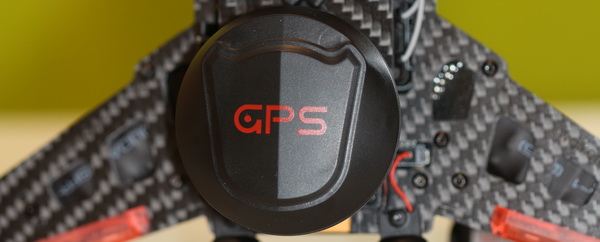
The GPS antenna comes in a small carton box and must be mounted and secured with 3 screws on the rear part of the quadcopter. The installation process is very simple and takes about 5 minutes, just take care on the right orientation of the GPS plug when you are inserting it in the flight controller.
On the top of the airframe there is a camera mount with anti-vibration dumpers which allows to install small cameras like the Run Cam HD. This is pretty cool if you want to capture your race.
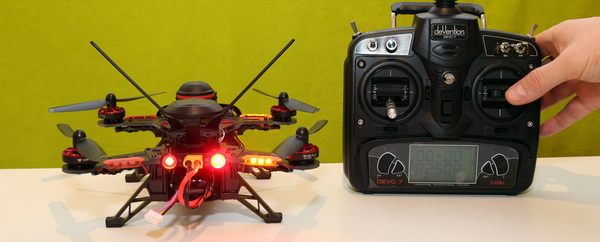
The flight direction changes are signaled by some orange LED bars which are located on the side of each arm.
There are two status LEDs in the rear of the quadcopter which are not synchronized and show different things. The left one indicates the GPS status, for example 2 blinks means that were found 7 satellites and the quadcopter is ready for safe GPS assisted flight.

Runner 250 Advance review – Transmitter (Devo7)
My Runner 250(R) comes with the Devo 7, which is a nice entry level transmitter from Walkera. It feels good in hand but is heavier than I expected, especially after I loaded 8 pieces of AA Ni-Cd batteries. I found it more convenient to feed the transmitter with a single Li-Po battery and I already ordered a 11.1V 2200mAh 15C battery for this purpose.
Being an “universal” transmitter suitable for all kind of aircrafts, some settings have to be done before binding it with the quadcopter. In the Runner 250 Advance’s user manual there are exactly described all the configuration steps for the Devo 7, F7 and F12E transmitters.
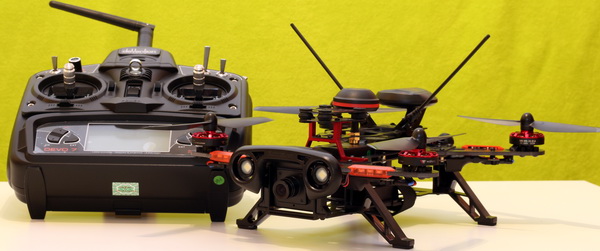
Besides the usual control buttons and sticks, the Devo 7 transmitter have 5 switches and 1 rotary potentiometer:
- “Hold turn” not set with the Runner 250(R);
- “Gear” allows to stop/start recording with the HD camera;
- “Mix” allows to switch between “Manual” , “GPS” and “Return to home” modes;
- “FMOD/FMD” allows to switch between “Normal “, “Intermediate” and “Roll/Aerobatic” flight modes;
- “D/R” Ellev/Aile/Rudd;
- Aux2 can be used to control the angle of a gimbal.
For a safe and successful maiden flight it is very important to perform all the possible calibrations (compass, gyro and accelerometer).
In Mode2, the motors can be unlocked and locked with the left control stick (Throttle/Rudder) by pushing it to down left respectively down right.
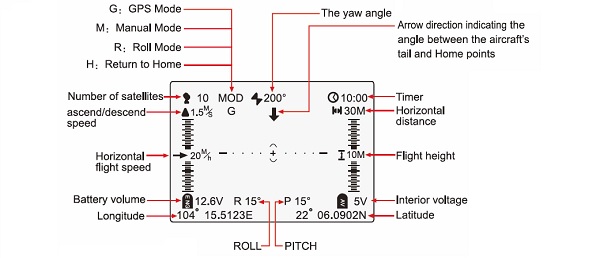
As shown in the image above, thanks to the OSD module, there are many useful flight information displayed on the FPV monitor.
Unfortunately I succeeded to test it only indoor and in short flights as it is very noisy because of the very powerful brushless motors. Moreover, I’m still searching after my son’s LEGO pieces that were spread all over my living room by the powerful wind that the 6″ propellers generated. I promise that as soon as the weather will allow me I’ll make some test flights in the nature and post it here. I’m very curious and anxious to experience the speed this quadcopter can reach and to check how it reacts to my control maneuvers. Meanwhile, I will try to upload the latest firmware (V1.2).
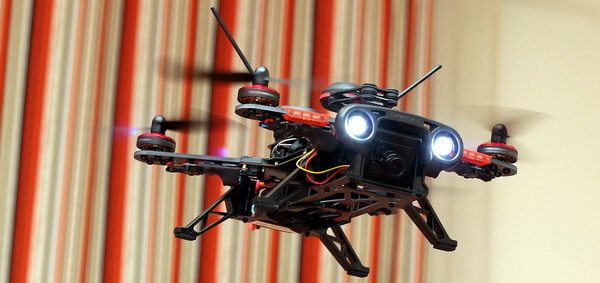
Runner 250 Advance review – Final words
One thing is certain, this upgraded Runner 250 looks awesome in daylight as well in dark. There are probably many other cheaper or even faster racing quadcopters on the marked, but none offers so many features like this Walkera model.
Runner 250 Advance – Unboxing and quick test video
What I like
- Dedicated backpack for carry and storing;
- Modular design;
- GPS return to home (not tested yet);
- 800 TVL or full HD first person view camera;
- Different 5.8Ghz FPV TX according to the local RF regulations;
- Excellent control range (about 1 Km with DEVO7);
- Innovative direction lights;
- Onboard sound buzzer.
- With maximum 40 Km/h flight speed it is not the fastest racing quadcopter;
- The position of the battery must be adjusted according to the center weight of the aircraft;
- Many “Flip of the Death” reports in acrobatic mode;
- Probably will be more after some outdoor flights.
Last edited:
